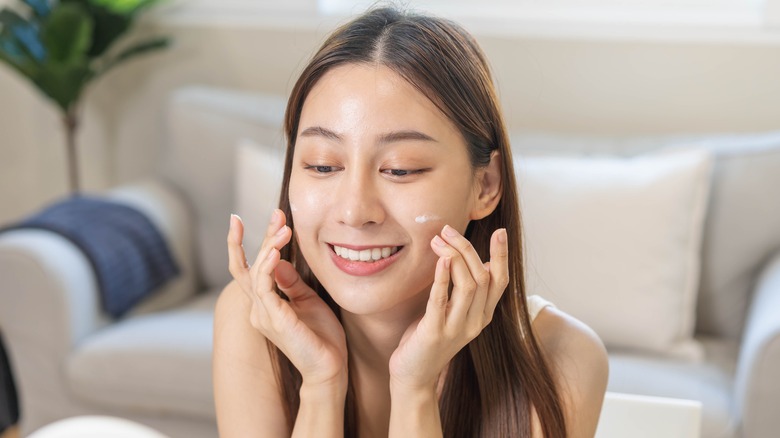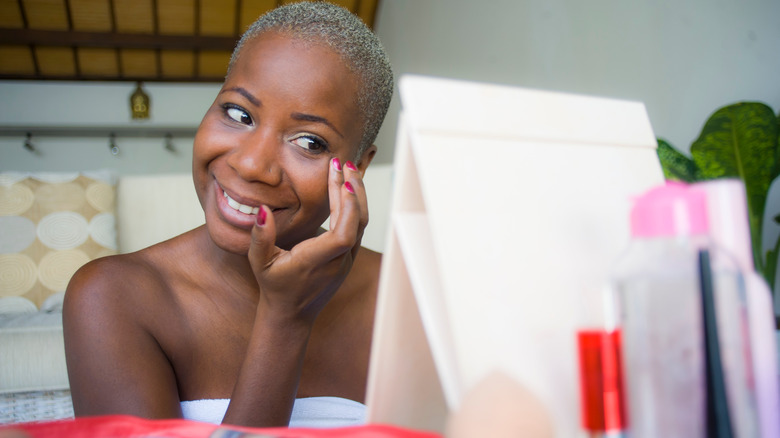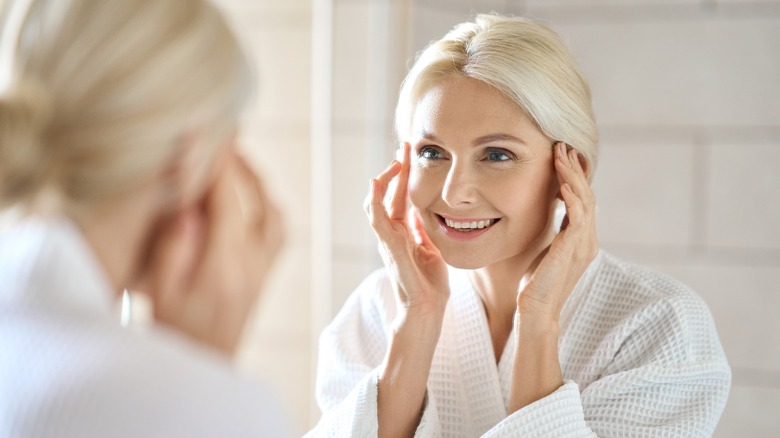The Reason You Should Never Rub Your Foundation Primer Into Your Skin
Makeup has the potential to transform our skin. It can disguise wrinkles, cover pores, highlight, shape, and sharpen our features, and so much more. On the more frustrating end, it can also lead to acne. It's an art form and, unlike other forms of art, it's crucial to our skin's health to wipe off the layers adorning our face at the end of the day if we want to prevent acne. This has everything to do with what's inside the makeup.
Whether you're looking to reduce the appearance of pores, brighten your skin, or fade wrinkles, primer might just be your answer. Different primers can achieve different things, all of them, however, have the same purpose as a base layer for your makeup to go on top of. From here, you can add your regular makeup — the primer helps the overall look appear smoother and, maybe even brighter. It's a great tool to utilize in your makeup routine. Before integrating though, you should know that there's a certain way to apply it. Additionally, washing it off properly will help prevent breakouts.
Primer application and cleansing
Silicone helps fill your pores and gives it a smooth look, making it a popular ingredient in primers. When you're applying it, it's important that you tap it along your skin rather than rub it in. "Silicone can break up with too much rubbing or tugging, which will cause the product to roll and peel off the skin," celebrity makeup artist and Global Director of Artistry & Education at TATCHA Daniel Martin told Byrdie. "Tapping stabilizes the area." Some makeup artists recommend using your fingers to apply it rather than a brush. Additionally, it's absolutely essential to let your primer dry — makeup artist Mary Phillips told Allure to wait at least a minute.
With that being said, silicone is an occlusive, meaning it serves as a barrier between your skin and makeup. This creates problems when it's not washed off properly because it traps in dirt, oil, dead skin cells, and bacteria, whose only place to go then, is your skin's pores. When this happens, acne breakouts tend to happen. Double-cleansing on days you wear primer can help prevent breakouts. Silicone repels water, so the oil-containing product for the double cleanse will be better at removing the primer than a cleanser alone.
What to look for
"Apply lightly and sparingly is my go-to rule for primers," makeup artist Allan Avendaño told Allure. Avendaño went on to explain that a dollop the size of a dime or nickel is plenty. For those with oily skin, makeup artist Vincent Oquendo recommends minimizing the amount used — so stick to a dime-sized amount. For those with dry skin, he said it's okay to use as much as a quarter-sized amount. The best hydrating primers for dry skin will contain ingredients like hyaluronic acid.
As we established earlier, different primers accomplish different things. This pertains especially to skin type. "Think about what your skin needs to help your makeup stay on longer," celebrity makeup artist Delina Medhin told Well + Good. "If your skin is dry, you want a hydrating primer. If your skin is oily, you want a mattifying primer."
Some primers can help reduce redness, others can brighten your skin, while others can help color correct. With that being said, their effects are not long-lasting. Primer will help the appearance of your skin only for the duration it's on your skin, meaning, as soon as you wash it off, whatever smoothening or brightening it gives will disappear.


